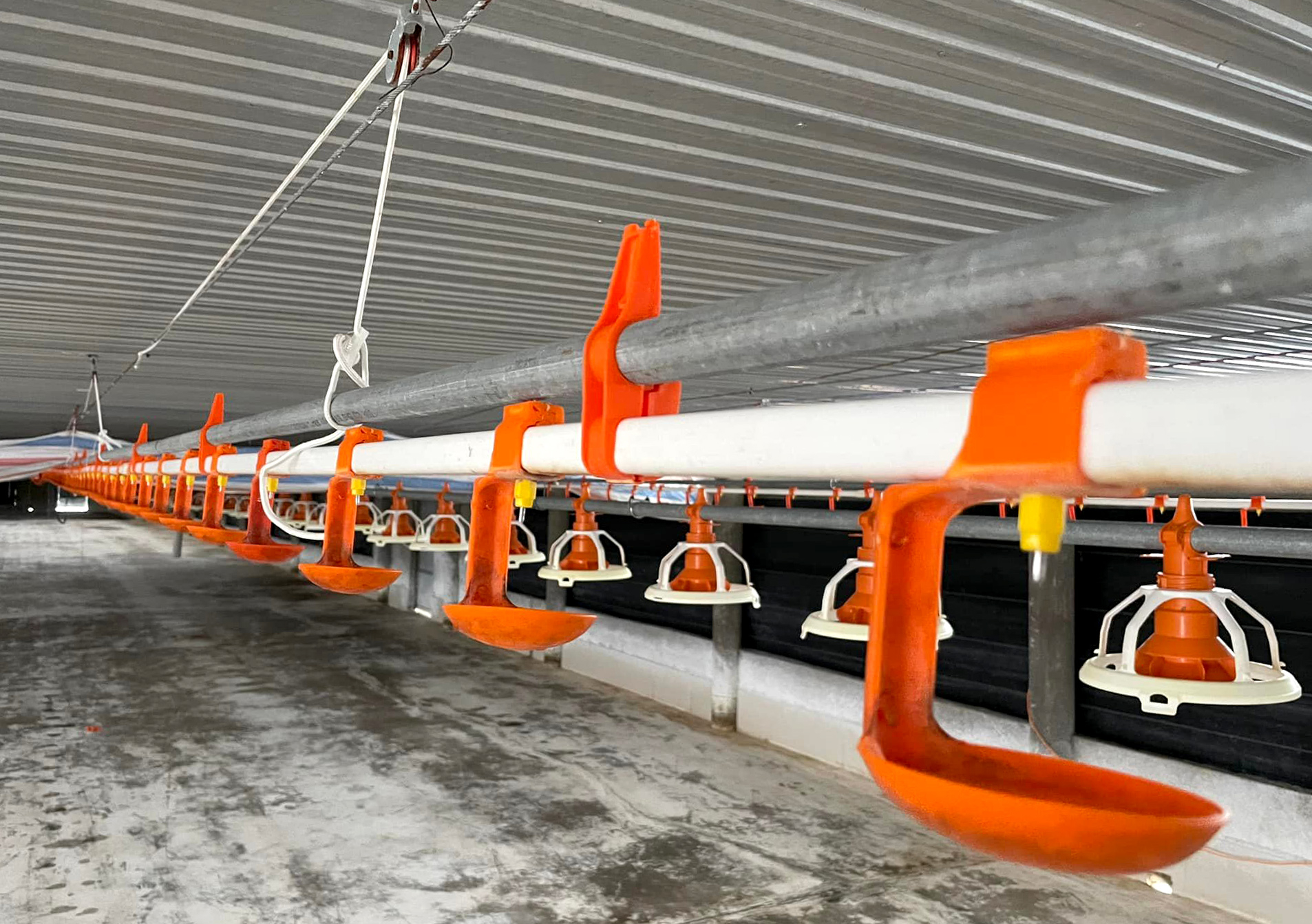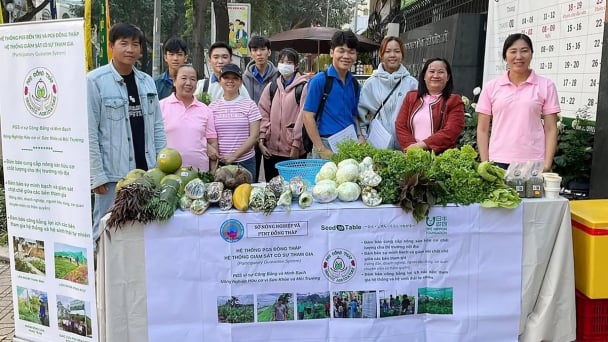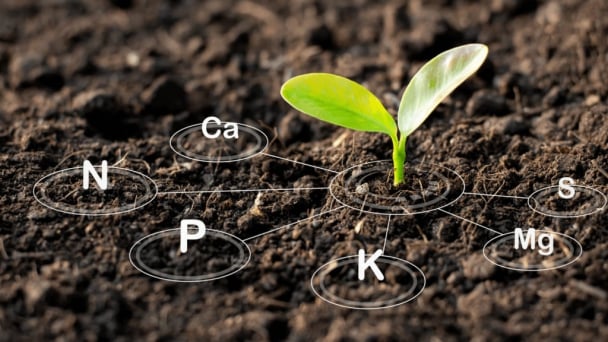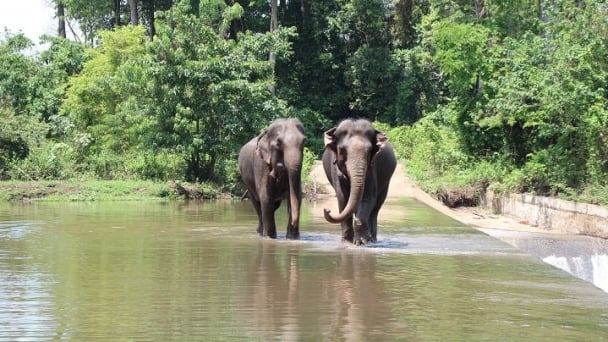May 20, 2025 | 15:28 GMT +7
May 20, 2025 | 15:28 GMT +7
Hotline: 0913.378.918
May 20, 2025 | 15:28 GMT +7
Hotline: 0913.378.918

Local governments must identify its zones and facilities that are safe from animal diseases. Photo: Son Trang.
According to Mr. Nguyen Kim Dung, Head of Epidemiology Division under Region 6's Sub-Department of Animal Health, the Department of Animal Health has suggested several key tasks and solutions in order to successfully establish disease-free zones for poultry in the Southeast between 2022 and 2030.
Firstly, Local governments must identify its zones and facilities that are safe from animal diseases. Subsequently, they must integrate these zones into the provincial planning in compliance with the Law on Animal Health, the Law on Planning and the requirements by the World Organization for Animal Health (OIE). On the other hand, local agencies must also identify unqualified zones that need to be developed to achieve the disease-free status according to the regulations of Vietnam and OIE.
Promote information, communication and dissemination of knowledge on disease safety, improve professionalism and expertise for officials working in animal disease prevention and control, with the goal of keeping areas and facilities safe. understand the OIE's disease safety regulations.
Guidance on disease-free livestock production, training, and raising awareness of farmers on disease-safe livestock. Proactively organize sampling, monitoring and testing to prove that there are no circulating pathogens, prove the effectiveness of disease prevention vaccines, demonstrate food safety in disease-free areas, and ensure food safety requirements. information retrieval, monitoring results prove the disease-free area.
Animal control, animal slaughter and animal health inspection in disease-free zones will be closely monitored to promptly detect foreign animals that are transported into disease-free zones for slaughter and consumption. Information and data will be extensively collected ensure that the disease-free zone certificate and traceability requirements for animal products are met.
The Department of Animal Health has urged local governments to promptly implement the Prime Minister's Decision No. 414 on maintaining, consolidating and strengthening the capacity of the local animal health systems, with a focus on the establishment and management on disease-free zones. Additionally, local governments and businesses will be instructed to draft national capacity profiles and other documents in preparation for export.
Preliminary and final workshops must be organized in a timely manner to evaluate and discuss solutions that meet the requirements of OIE and importing countries.
In addition to the efforts of the local government and the agricultural sector, livestock businesses are also crucial to the success of the roadmap to create disease-free zones for poultry.

Water lines in an industrial-scale chicken farm. Photo: Son Trang.
During the development of a roadmap for disease-free zones, the Department of Animal Health has requested livestock businesses, organizations and individuals with successful and disease-free livestock production facilities to steady their efforts.
Additionally, stakeholders will organize annual assessment of monitoring samples; implement solutions to maintain a disease-free chicken production chain for export.
Livestock businesses must actively coordinate with various specialized animal health agencies and relevant local units in the planning and projecting of disease-free livestock production chains.
Businesses are advised to assign qualified human resources who have been trained in the requirements for biosafety, disease safety and food safety to each stage of the safety production chain.
Moreover, businesses must establish steering committees and technical working groups in order to implement their plans or projects efficiently..They should also participate in the disease prevention, control and surveillance activities in the buffer zone surrounding the disease safety chain.
Businesses will prepare registration dossiers for certification of disease-free zones in accordance with Vietnam's regulations; prepare documents and invite competent authorities from the importing country to assess and acknowledge disease-free production chains in accordance with OIE regulations.
The Department of Livestock Production reported that as of December 31, 2022, Vietnam's total poultry herd has over 557 million heads. The Southeast region has a total herd of nearly 91 million heads, accounting for 12.67% of the total herd in the country. According to the national livestock development strategy from 2021 to 2030, with a vision towards 2045, Vietnam aims to maintain a regular chicken population betweem 500 and 550 million heads. Additionally, 60% of these chickens will be raised using industrial methods. Poultry meat is expected to account for 29 - 31% of the total amount of carcasses; the proportion of poultry subjected to industrial slaughter is expected to reache 50%; between 40 and 50% of the total poultry meat will be processed; between 20 and 25% of the total poultry meat and eggs will be exported.
Translated by Nguyen Hai Long

(VAN) Japan's grant aid project contributes to capacity building, promoting organic agricultural production, and fostering sustainable community development in Dong Thap province.

(VAN) For years, the CRISPR-Cas9 genome technology has been reshaping genetic engineering, a precision tool to transform everything from agriculture to medicine.

(VAN) Vietnam aims to become a 'leader' in the region in the capacity and managing effectively soil health and crop nutrition.
![Reducing emissions from rice fields: [Part 1] Farming clean rice together](https://t.ex-cdn.com/nongnghiepmoitruong.vn/608w/files/news/2025/05/05/z6509661417740_a647202949c539012a959e841c03e1d3-nongnghiep-143611.jpg)
(VAN) Growing clean rice helps reduce environmental pollution while increasing income, allowing farmers to feel secure in production and remain committed to their fields for the long term.
/2025/05/19/5136-1-144800_230.jpg)
(VAN) The Nghe An Provincial People's Committee has just approved the list of beneficiaries eligible for revenue from the Emission Reductions Payment Agreement (ERPA) in the North Central region for the year 2025.

(VAN) 14 out of 35 domesticated elephants in Dak Lak province have had their living conditions improved, with 11 of them currently participating in the non-riding elephant tourism model.

(VAN) Muong Nhe Nature Reserve hopes that being upgraded to a national park will lay the foundation for forest protection efforts to be carried out in a systematic, modern, and sustainable manner.